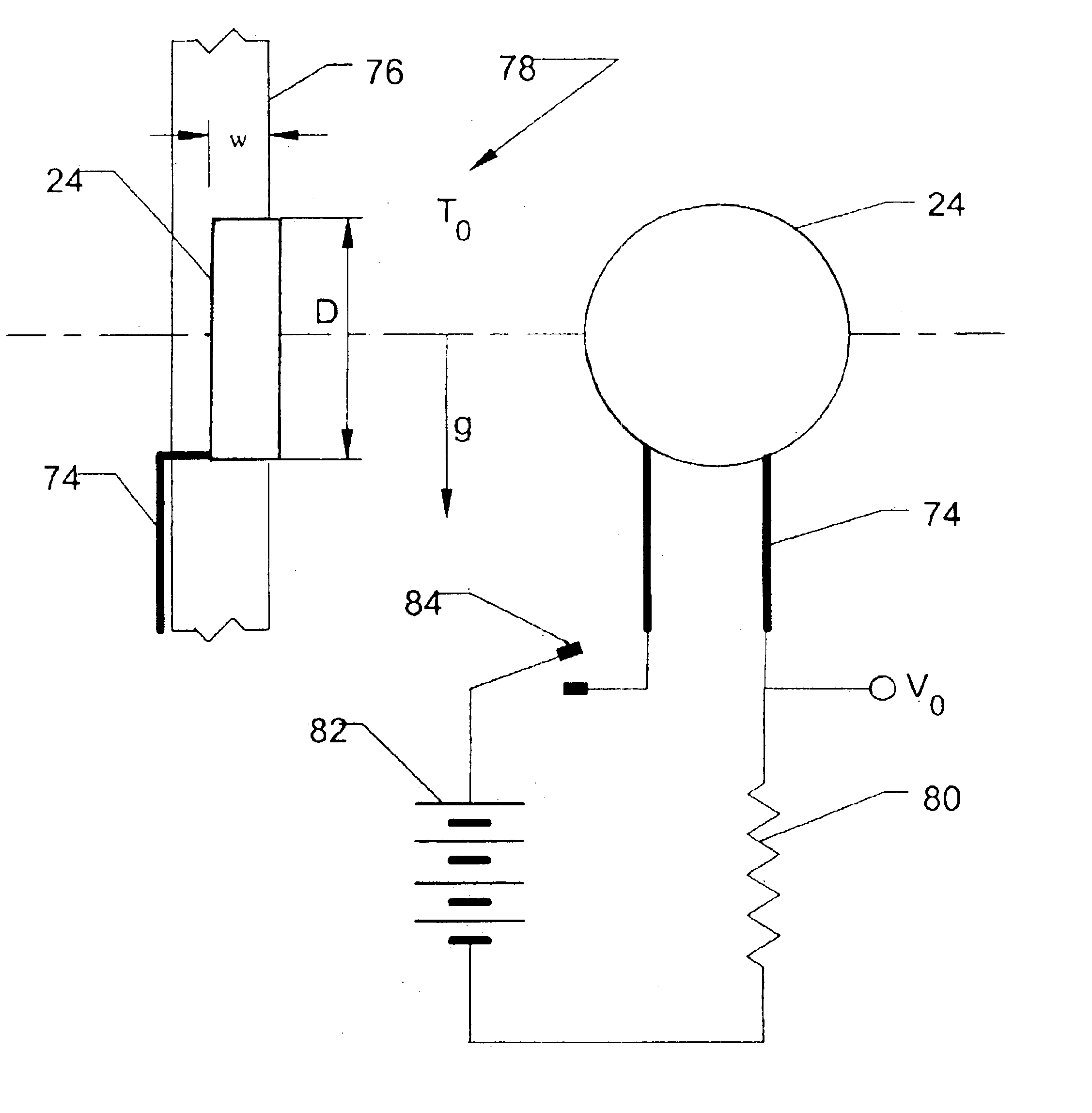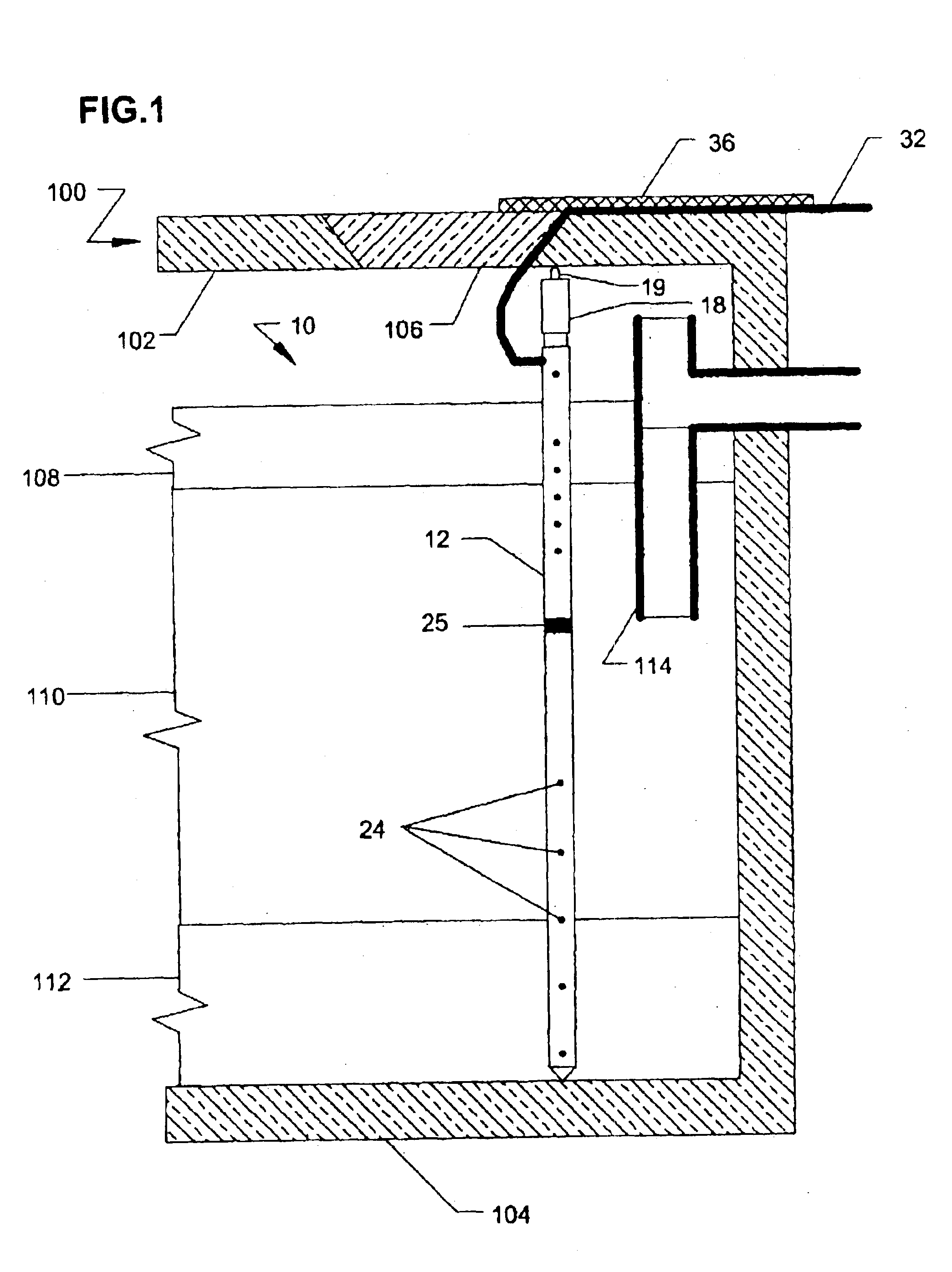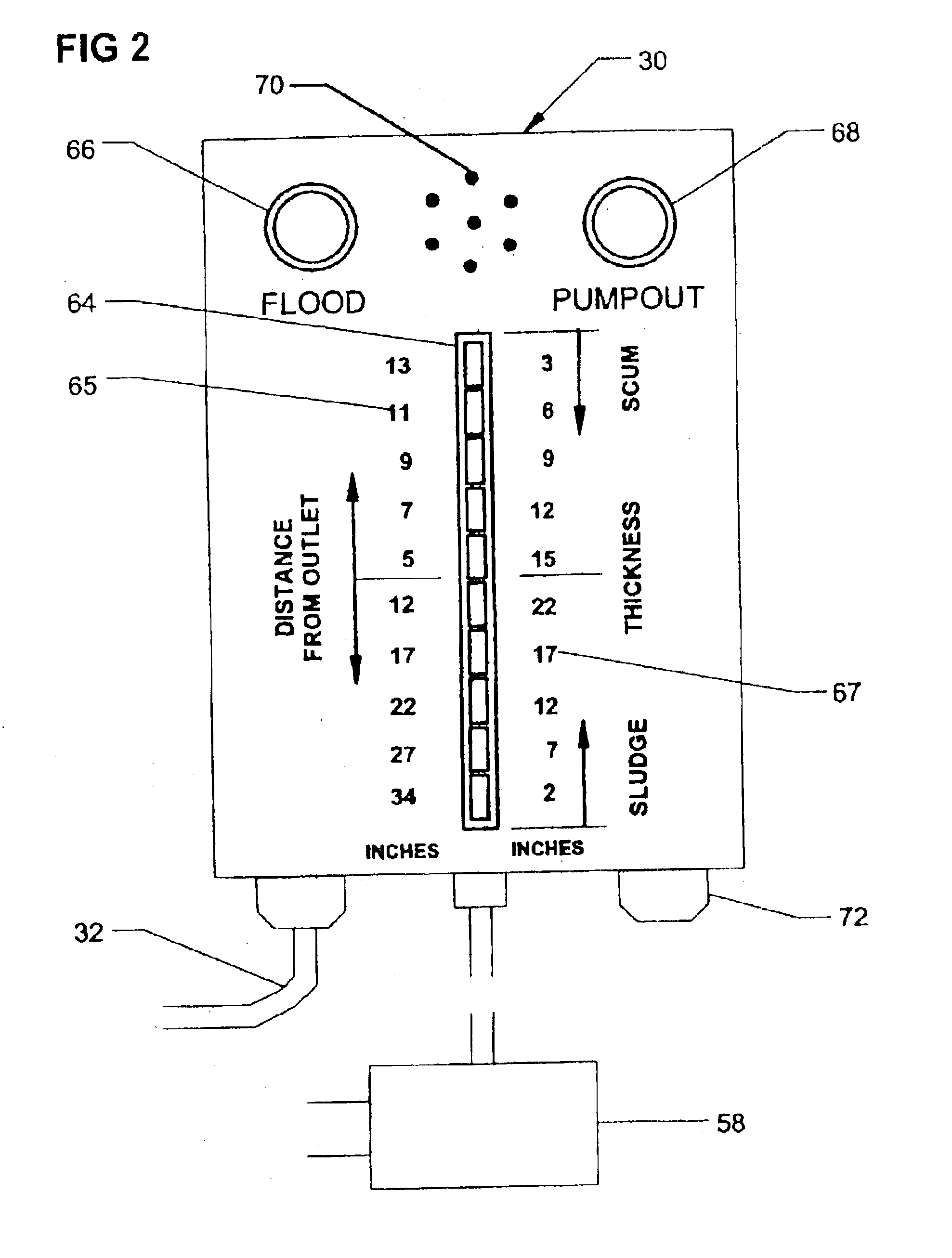Monitoring system with thermal probe for detection of layers in stratified media
a stratified media and monitoring system technology, applied in the direction of fluid pressure measurement by mechanical elements, electric/magnetic measuring arrangements, dispersed particle filtration, etc., can solve the problems of system failure, ground and surface water can become polluted, and system failures and other problems
- Summary
- Abstract
- Description
- Claims
- Application Information
AI Technical Summary
Benefits of technology
Problems solved by technology
Method used
Image
Examples
case 1a
ference to the ring electrode coordinate system depicted in FIG. 5 and to the hemispherical and ring electrode depictions of FIGS. 6A, and 6B, consider first a hemispherical electrode sensor 24 or 25 of radius, r, on the surface of a non-conducting cylinder, such as the elongate tube 15, of radius, b, in a fluid 110 with electrical conductivity, σ. If I is the current from the electrode sensor 24 or 25 to the fluid 110 and r<<b, the potential of the electrode sensor 24 or 25 will be given by
V(r)=(I / 2πσ)1 / r
where we have set the potential of the fluid 110 at infinity equal to zero.
Case 1b. Consider a ring electrode sensor 24 or 25 of radius, r, on the surface of a non-conducting cylinder, such as the elongate tube 15, of radius, b, in a fluid 110 with electrical conductivity, σ, as shown in FIG. 5. If I is the current from the electrode sensor 24 or 25 to the fluid 110 and r<<b, the potential of the electrode sensor 24 or 25 will be given by
V(r,b)=(I / 2πσ)F(b,r)
wher...
case 3a
hemispherical electrode sensor 24 or 25 of Case 1a is located at a height, a, above a horizontal boundary 111 at z=0 between two fluids with different conductivities and the axis of the cylinder, such as the elongate tube 15, is vertical as shown in FIG. 6a, then the potential of the electrode 24 or 25 obtained by the method of images is V(r,a)=(I2 π (σ1+σ2))((1+σ1σ2)1r+(1-σ1σ2)12 a):a>r V(r)=I / π(σ1+σ2): a=0V(r,a)=(I2 π (σ1+σ2))((1+σ2σ1)1r-(1-σ2σ1)12 a):a<-r
where σ1 and σ2 are the conductivities of the lower and upper fluids respectively.
case 3b
ring electrode 24 or 25 of Case 1b is located at a height, a, above a horizontal boundary 111 at z=0 between two fluids with different conductivities and the axis of the cylinder, such as the elongate tube 15, is vertical as shown in FIG. 6b, then the electrode potential obtained by the method of images is V(r,b,a)=(I2 π (σ1+σ2))((1+σ1σ2)F(r,b)+(1-σ1σ2)F(2a,b)):a>rV(r,b,0)=(Iπ(σ1+σ2))F(r,b):a=0V(r,b,a)=(I2 π (σ1+σ2))((1+σ2σ1)F(r,b)-(1-σ2σ1)F(2a,b)):a<-r
4. Interface Resolution Functions
The relative potential of a hemispherical electrode 24 or 25 in a stratified fluid conductor (Case 3a) is shown as a function of a / 2r in FIG. 7a for various values of the conductivity ratio σ1 / σ2. It can be seen that the spatial resolution for such an electrode 24 or 25 is approximately the electrode diameter, 2r. The corresponding relative potential for a ring electrode 24 or 25 (Case 3b) is shown in FIG. 7b. In this case, the spatial resolution is approximately the cyl...
PUM
| Property | Measurement | Unit |
|---|---|---|
| Temperature | aaaaa | aaaaa |
| Length | aaaaa | aaaaa |
| Electric potential / voltage | aaaaa | aaaaa |
Abstract
Description
Claims
Application Information
 Login to View More
Login to View More - R&D
- Intellectual Property
- Life Sciences
- Materials
- Tech Scout
- Unparalleled Data Quality
- Higher Quality Content
- 60% Fewer Hallucinations
Browse by: Latest US Patents, China's latest patents, Technical Efficacy Thesaurus, Application Domain, Technology Topic, Popular Technical Reports.
© 2025 PatSnap. All rights reserved.Legal|Privacy policy|Modern Slavery Act Transparency Statement|Sitemap|About US| Contact US: help@patsnap.com



